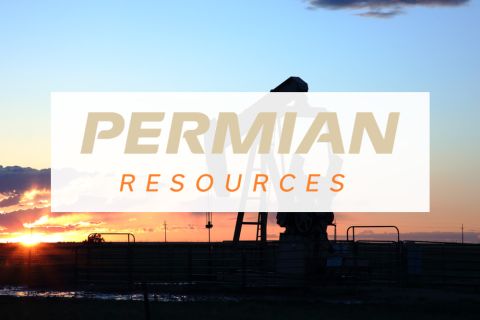
In the near term, there will be shortage of rigs in the mid-water, deepwater, and ultra-deepwater markets. Over the long term, there will be a significant number of new rigs coming out in 2014, and the market could come back in line, said Mike Acuff, senior vice president, contracts and marketing, Diamond Offshore Drilling Inc.
Speaking at the IADC 2012 annual meeting in Scottsdale, Ariz., Nov. 8, Acuff pointed out that the rigs for ultra-deepwater, which is >2,272 m (>7,500 ft) and deepwater, which is 1,515 m to 2,272 m (5,000 ft to 7,500 ft), are “sold out in effect for 2013. The first available rigs will be in 2014. Operators are lining up for rig capacity.”
A year ago, day rates were in the US $300,000 range. In the past 12 months, those rates have gone up to $500,000 per day, and availability in 2013 is difficult, he emphasized. However, at the same time, costs have gone up for labor and equipment, “so it is not a one-for-one increase for the day rates.”
The number of rigs under construction is almost at the peak level reached in 2008. Newbuilds have gone up for two reasons – higher demand and attractive shipyard pricing in Singapore and South Korea, he continued.
Currently, demand for ultra-deepwater (UDW) and deepwater rigs are being driven by exploration work. There will be an even greater demand for these rigs when development drilling begins in many of these frontier areas, Acuff said.
Mid-water, deepwater niche market
The number of rigs available for the mid-water market (152 m to 1,515 m or 500 ft to 5,000 ft) has remained steady over the past few years, he noted.
Diamond Offshore sees a niche market for mid-water and deepwater rigs. The company is converting two older semisubmersibles for water depths to 1,818 m (6,000 ft). The Onyx is being converted in Brownsville, Texas, and the Apex in the Jurong Shipyard in Singapore. By reusing the hulls, the price tags for the conversions are much lower – $300 million for the former and $370 million for the latter.
“We see this as a significant market going forward, he added.
Three major challenges
Although the UDW and deepwater markets are attractive, there are three major challenges facing the industry – personnel, training and competency, and regulatory uncertainty.
Finding crews for the newbuilds is a significant challenge for Diamond Offshore and several other contractors, Acuff said.
He estimated that 90 employees will be needed for each of the 92 jackups under construction, and 185 employees will be needed for each floater. That comes to a total of 19,750 new employees over the next few years. “Diamond Offshore alone will need to bring onboard nearly 875 employees. That’s bringing a significant number of people into the company.”
His company is working hard at recruitment. Internal recruitment comes first by fast-tracking its current employees to man the newbuilds. “We pull people off their rigs about six months in advance for the training they need before assigning them to the new rigs,” he said.
The company also is recruiting internationally. Recently, Diamond Offshore went to Romania and signed up 24 recruits who were marine engineers, mechanical operators, and marine workers. Twenty-two graduated from the program and were assigned to drilling rigs.
There are four areas that are being recruited: former employees, career fairs, military hiring, and land-rig crews, he explained.
To meet the training and competency challenge, the company is using training simulators and building the Diamond Offshore Technology Center next to its headquarters in Houston. About 800 employees are expected to be trained the first year and 1,600 new employees per year after that.
The final challenge is regulatory uncertainty. “Are there going to be additional BOP requirements? What will be the impact of that on the existing fleet? What will be the timing for compliance? With the supply chain the way it is today, that could be difficult,” Acuff said.
It is not only US regulations that pose a challenge. In Brazil, the ANP is taking a much bigger role in operations, he noted. The world is watching to see what regulations come out.
“I think that these are challenges, but these are manageable. There is a strong market outlook. I don’t see an end to that at the moment,” he concluded.
Contact the author, Scott Weeden, at sweeden@hartenergy.com.
Recommended Reading
Permian Resources Closes $820MM Bolt-on of Oxy’s Delaware Assets
2024-09-17 - The Permian Resources acquisition includes about 29,500 net acres, 9,900 net royalty acres and average production of 15,000 boe/d from Occidental Petroleum’s assets in Reeves County, Texas.
APA Corp., TotalEnergies Announce $10.5B FID on ‘Goliath’ Sized Deal Offshore Suriname
2024-10-01 - APA and TotalEnergies’ offshore Suriname GranMorgu development is estimated to hold recoverable reserves of more than 750 million barrels.
Oceaneering Acquires Global Design Innovation
2024-10-30 - Oceaneering purchased Global Design Innovation, the only provider certified by the United Kingdom Accreditation Service (UKAS) to perform remote visual inspection using point cloud data and photographic images.
Utica’s Encino Boasts Four Pillars to Claim Top Appalachian Oil Producer
2024-11-08 - Encino’s aggressive expansion in the Utica shale has not only reshaped its business, but also set new benchmarks for operational excellence in the sector.
Comments
Add new comment
This conversation is moderated according to Hart Energy community rules. Please read the rules before joining the discussion. If you’re experiencing any technical problems, please contact our customer care team.




